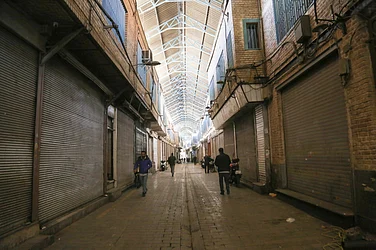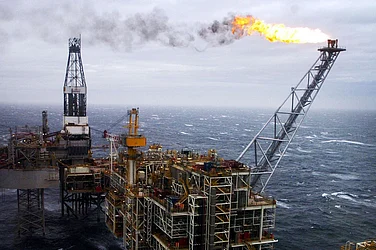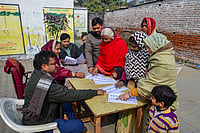Tiny villages in the hilly terrains of Morocco turned into rubbles in a matter of a few seconds as a deadly earthquake shook the North African country on Friday night. It’s been almost a week, but the death toll continues to surge, with over 2,900 dead and thousands of others injured. The 6.8-magnitude was the deadliest in the history of Morocco and was followed by two dozen aftershocks - the strongest one was recorded as 4.8 magnitude quake on the Richter Scale.
The UNICEF has estimated that the quake has also affected around 100,000 children, according to initial reports. Further, the World Health Organisation has said that around 300,000 people have been affected by the deadly earthquake as the struggle for food, water, shelter, and rescue continues.
Visuals of collapsed buildings and damaged structures reflect the extent of the disaster, which left the survivors in the dust and rubble of their homes. Though the government officials reported to the media that the rescue teams were “working hard”, the teams struggled to even reach villages in Taroudant and Al-Haouz due to blocked roads and remote locations, according to Reuters.
With the winter coming soon, and broken houses lining up the mountains, people are left to wonder what awaits them in the future.
The earthquake resulted from a geological phenomenon called a “reverse fault”, according to a report by Down to Earth, which further stated that this occurs when tectonic plates collide, causing the Earth’s crust to thicken.
In a parallel world, catastrophic floods have wreaked havoc in the Middle Eastern country of Libya, caused by the storm Daniel.
The Moroccan earthquake followed several deadly earthquakes that have rocked the planet in recent times -- the most recent being in Turkey and Syria earlier this year. The combined death toll from the earthquake that hit Turkey and Syria on February 6 has been pegged at nearly 50,000. A few days later, a strong earthquake shook southern Ecuador and northern Peru, killing at least 14 people and trapping others under the rubble, and sending rescue teams out into streets littered with debris and fallen power lines.
Disaster has a long history. And we have a short future to understand what is perhaps making it a recurring incident. Against this backdrop, Outlook’s issue, 'Deliver Us From Greed’, on March 1, 2023, looked at how several factors including climate change, poor planning and mindless construction may lead to catastrophic ‘natural’ disasters which are marked by greed and arrogance.


























